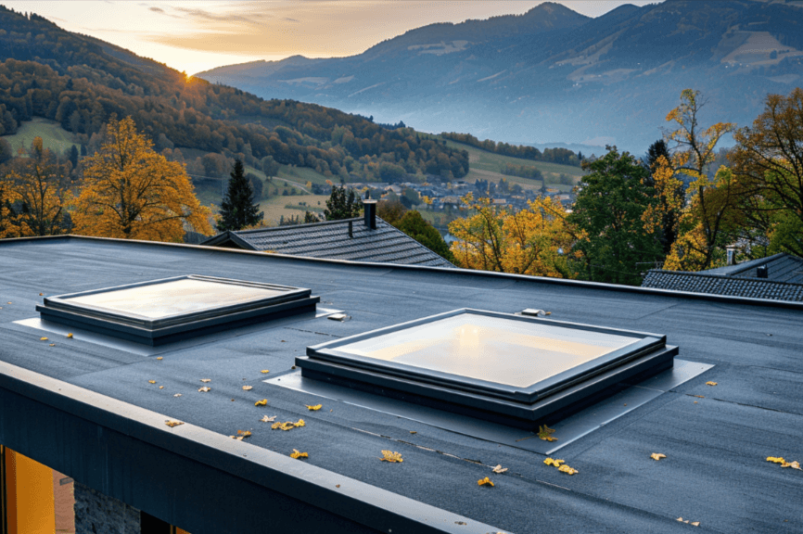
Solar skylights are revolutionizing the way we think about natural lighting and energy efficiency in buildings. Unlike traditional skylights that only serve to bring natural light into a space, solar skylights incorporate solar power technology to enhance functionality. This innovative combination not only illuminates your interior spaces with daylight but also uses solar energy to power features such as opening and closing mechanisms and automatic sensors.
Understanding Solar Skylights
A solar skylight is characterized by its ability to harness solar energy to facilitate its operation. It includes a solar panel that captures sunlight throughout the day, utilizing this energy to power the skylight’s functionalities. These may include the automated opening and closing of the skylight or the operation of automatic sensors that respond to environmental conditions.
The solar panel, typically located on the external part of the skylight, charges a highly efficient, concealed battery. This battery powers the skylight’s operator and control system, ensuring functionality both day and night. The system’s design allows it to continue operating in various conditions, including overcast days, by storing enough charge to maintain its functions. This self-sufficiency highlights the solar skylight’s advantage in providing controllable ventilation and abundant daylight, making it an ideal solution for enhancing indoor environments sustainably.
The Dual Benefits of Solar Skylights
Abundant Daylight and Controllable Ventilation
Solar skylights offer the primary benefit of increasing natural light within a space, which can enhance mood, increase productivity, and reduce the need for artificial lighting. But beyond just illumination, these skylights provide controllable ventilation. With features like automatic opening and closing, they can help regulate indoor air quality and temperature, making a living or working environments more comfortable and healthier.
Energy Efficiency and Cost Savings
The integration of solar power into skylights contributes significantly to a building’s energy efficiency. By utilizing renewable solar energy for operation, solar skylights reduce reliance on electrical systems for ventilation and light control. This not only leads to savings on energy bills but also decreases the overall carbon footprint of a property. Additionally, the use of solar-powered batteries ensures that skylights remain operational during power surges and blackouts, providing uninterrupted functionality.
Installation Considerations
Before installing a solar skylight, several factors must be considered to ensure optimal performance and benefits. The orientation of the roof affects the amount of sunlight the solar panel can capture, with south-facing installations typically receiving the most light in the northern hemisphere. The slope and structural integrity of the roof also play critical roles in determining the feasibility of installation. Professional assessment is crucial to address these factors and to ensure that the installation does not compromise the building’s integrity.
Economic and Environmental Benefits
Cost Savings
Solar skylights can lead to direct savings on electricity bills by reducing the need for artificial lighting and contributing to thermal regulation. The initial investment in solar skylight technology is often offset by the long-term savings and increased property value it brings.
Reduced Environmental Impact
By harnessing renewable solar energy, solar skylights play a significant role in sustainable building practices. They reduce the demand on non-renewable energy sources and lower greenhouse gas emissions, contributing to a healthier environment.
Potential Drawbacks and Solutions
While solar skylights offer numerous benefits, potential drawbacks such as the initial investment cost and maintenance requirements should be considered. However, technological advancements and increasing availability of solar skylight options have made them more accessible and easier to maintain. Many models now come with features like rain sensors, which automatically close the skylight during inclement weather, protecting the interior from water damage.
Conclusion
Solar skylights represent a significant advancement in green building technology, offering a blend of natural lighting, energy efficiency, and enhanced functionality. They provide an excellent solution for those looking to improve their living or working spaces while also making a positive impact on the environment. With careful consideration and professional installation, solar skylights can offer long-term benefits, making them a worthwhile investment for any sustainable building project.
